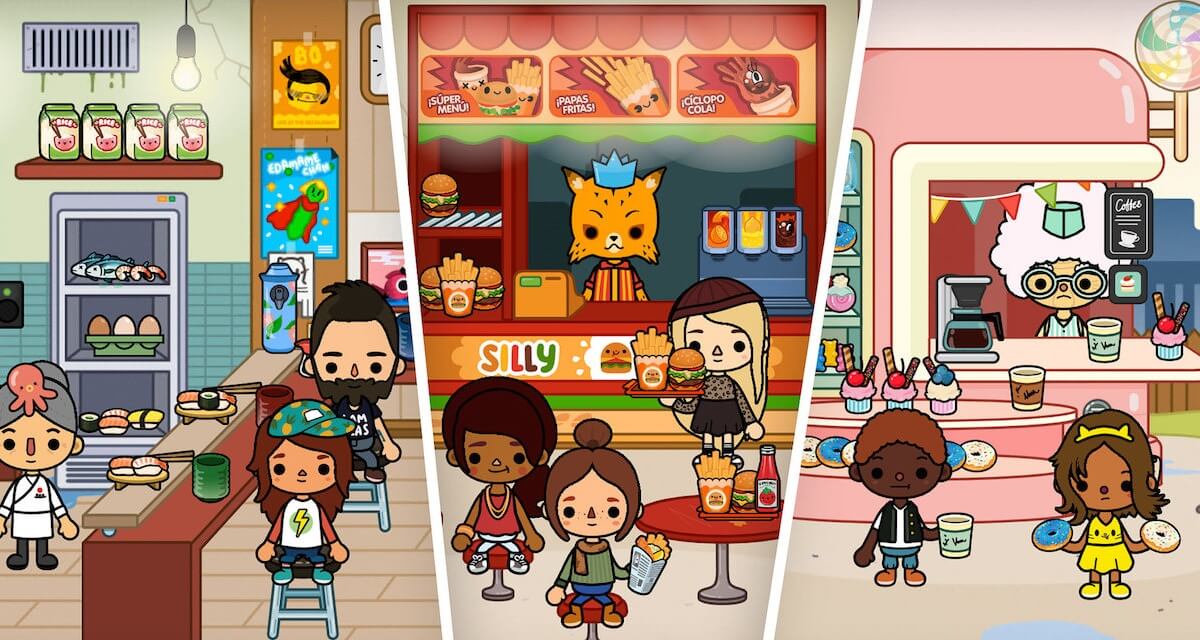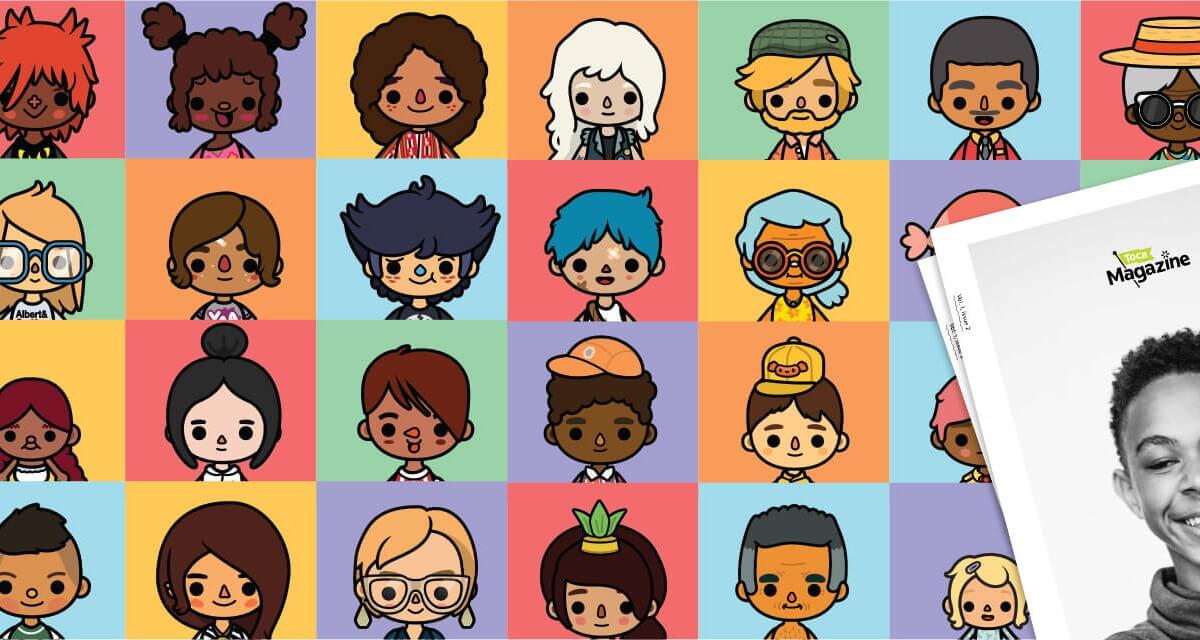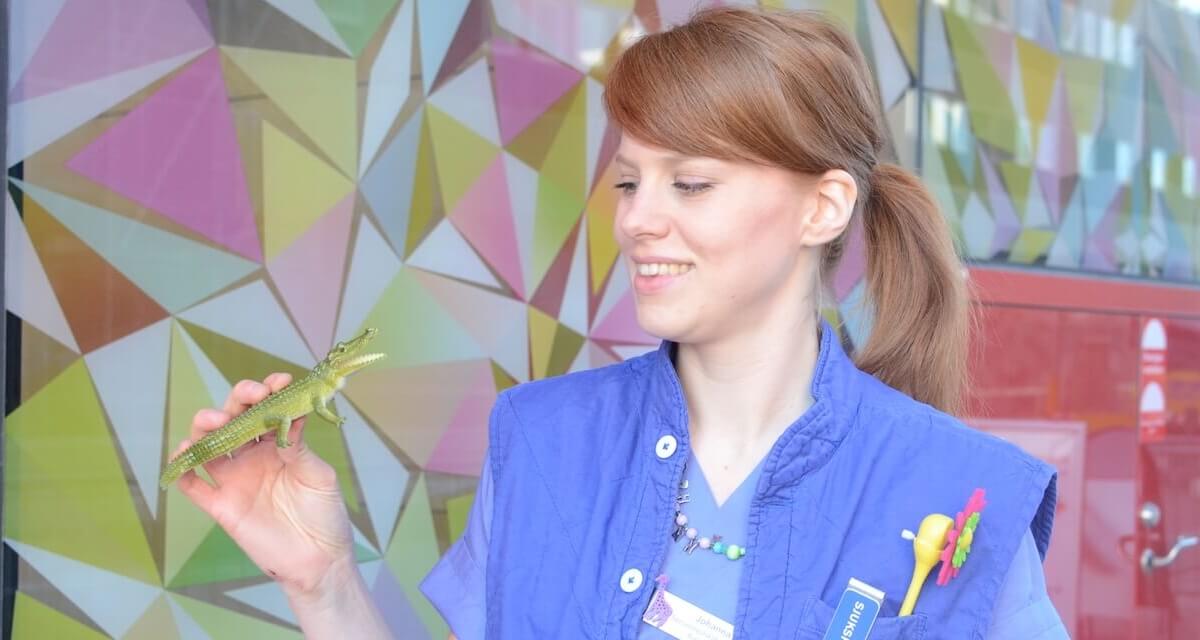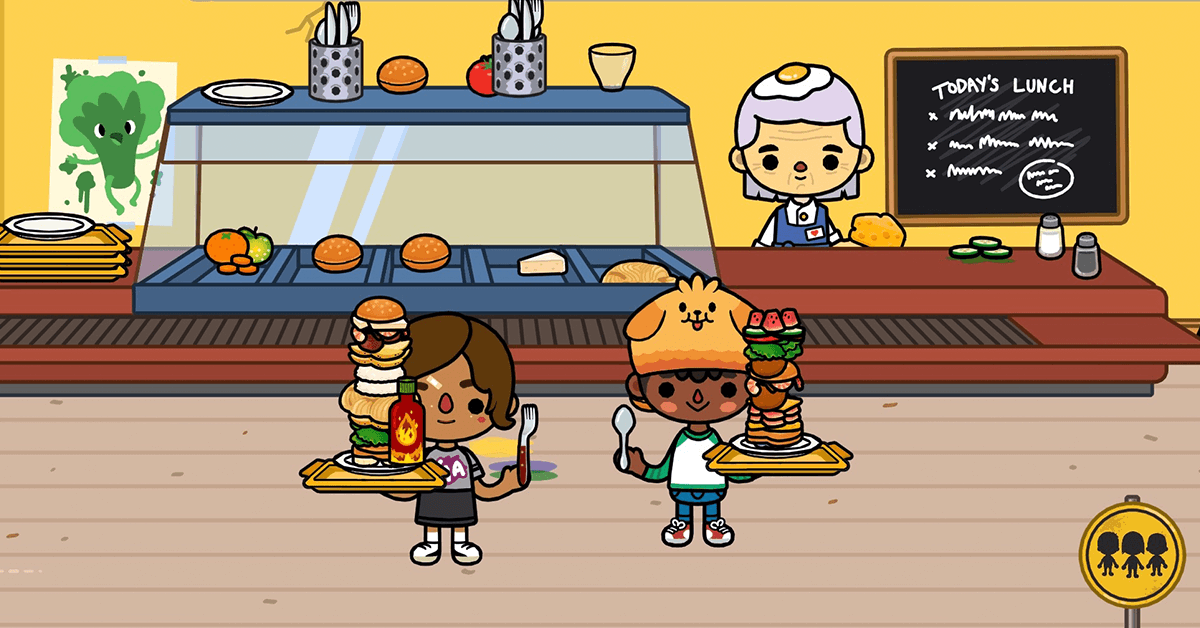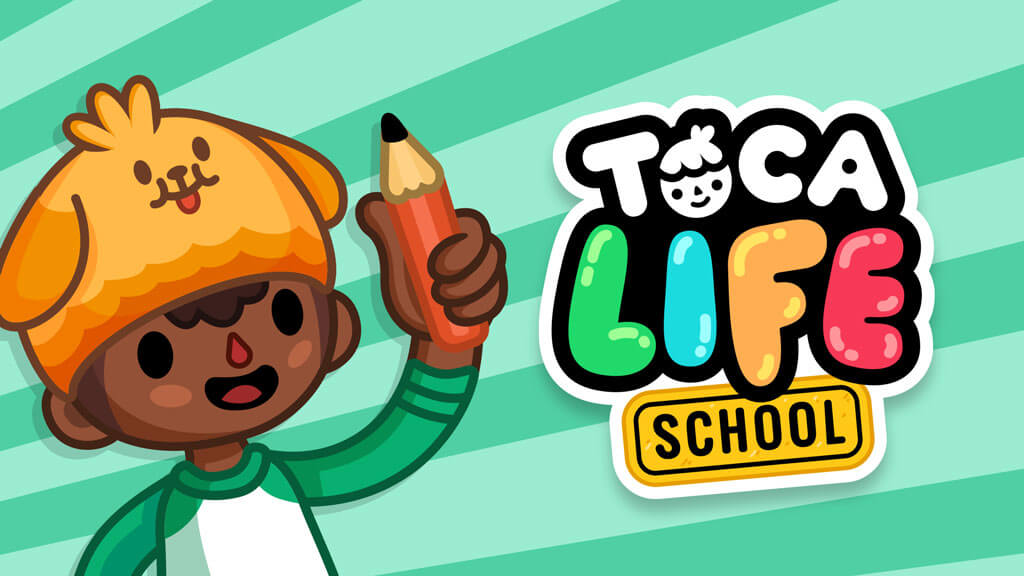Head of consumer products shares a behind-the-scenes look at Toca Boca's new back-to-school collection of apparel, accessories, bedding and more.
- By
- Parker Barry
Toca Boca is taking a leap from digital to physical by launching our first-ever collection of physical products at Target. Translating our beloved digital experiences into physical products has been a long and exciting journey for the team that has worked on making these products come to life. Here’s the story behind how they came to be.
August 2015: The retail tour
It all started in August 2015 when the full team of Toca Boca’s new consumer products department — with members from our Stockholm and San Francisco offices — first got together to do a retail tour in Los Angeles. The team then existed of:
- Sebastien Roux (Art Director)
- Eve Lebwohl Kessler (Director of Licensing & Product Strategy)
- Levi Di Marco (Producer)
- and me, Mathilda Engman (Head of Consumer Products)
Accompanying us to help guide us through the world of licensed products were Germaine Gioia and Bruce Giuliano, gurus in the licensing industry with over 20 years of experience of bringing new brands to the market.

The tour was part of our research around whether Toca Boca could possibly build out a licensing program in a way that lived up to the high quality that our apps are known for. As two of the four team members were based in Stockholm, the retail tour gave us a chance to understand the different retailers in the U.S. market and which retailers could be good homes for our future consumer products. We had so much fun seeing everything from high-end department stores to specialty stores to mass retailers, and to visit all these places together as a team gave us a great shared view on what we wanted to set as a goal for retailers to work with. To round off the trip we also made a study visit at Pixar — what could be a better way to end an exciting tour?

After the tour the full team worked closely to build out the strategy and creative vision for what Toca Boca physical products should be. We really wanted to focus on what experiences we wanted to give kids rather than starting with focusing on financial goals. By thinking about satisfying kids’ emotional needs, as we had done with our apps, we wanted the translation from digital to physical to be an experience truly taking the kids’ perspective rather than the “label slapping” that is often seen in the licensing industry.
Creative vision: Playthings in everything
What we came up with was that we wanted to take what Toca Boca is great at and what’s really part of our DNA, play, and incorporate it into everyday objects and products for kids. We would turn these everyday objects into playthings, and in doing so making kids’ every day more playful.

To bring play to as many new places as possible, we decided to create a lifestyle brand for kids, with multiple categories where our belief in the power of play could manifest itself.
To do this we teamed up with the best in the industry licensees, carefully selected by their area of expertise, quality of their products and understanding of our brand. We knew that to make a cohesive brand experience across product categories we would need to create very strong and close creative collaborations with all our partners and that our team needed to be very hands-on in the design process of the collection that we wanted to build out.

The first step of setting up a collaborative design process was to explain our brand values around play and our creative principles. We worked with the same creative principles we use when we create our digital experiences. These include having an inclusive and unisex approach to everything we design, not wanting any kid to feel excluded by Toca Boca. Examples of some other creative principles that we work with are: humor, attention to detail, quirkiness and embracing the platform. Embracing the platform is a principle around designing natively, a principle very much shaped by our digital background, but how we’ve translated this into physical products has been really to design with the functionality of the product in mind first and building in the play function or elements into the functionality of each individual product.
Bringing Toca Life to life
We also had to make a creative decision about whether the products should have a strong visual connection to any of our apps, a combination of several apps or if it should be a completely new branch of Toca Boca not visually connected to any style, universe or characters from our apps. We made the decision that Toca Life would be the best universe to build out the physical products from. It has:
- a strong, clean and bright art style
- a vast universe of objects, characters and locations
- a growing fan-base and following
By this time, fall 2015, we’d only launched two of our now seven Toca Life apps. But we knew that this was a series that we wanted to continue to build out, and the indications that this might become a very popular series were showing already between the first Toca Life app, Toca Life: Town, and the second one, Toca Life: City, with the initial download numbers of first week of launch being more than double between the first and the second app.
For me personally, having worked as the lead artist on Toca Life: Town, setting the art style and creating all the graphical assets for that app, I knew that the style and the universe could really be expanded as much as we wanted it to. For Toca Life: Town I had created an art style that should work well to represent many different situations and locations of everyday life, a character design system that should work for translating previous Toca Boca app characters and a richness in details in small objects that would intrigue kids to pick them up and start playing with them. All of these design aspects were applicable for the vision of “playthings in everything” that we had for the consumer products.
Getting the kids’ perspective
Always having the kids’ perspective is a big part of Toca Boca’s DNA, and to make sure we get it right we play test all our digital products with kids throughout the design process. For the physical products we had to find ways to do the same, even though the process is completely different. We solved this through a mix of qualitative research in the form of focus groups with kids and parents and quantitative research based on surveys with questions around character favorites, retailer preferences and so on. When we had created enough product concepts to make up a collection, we set up focus groups.
We worked with girls and boys age 5 to 9 and their parents to get input on which concepts were their favorites and least favorites, get their initial reactions, hear their thoughts around what they look for in products in general and how they usually shop or get dressed in the morning. This great feedback helped us understand what was important for them in the products being functional and of good quality, what made them giggle and why some pieces were more popular than others.
We worked with girls and boys age 5 to 9 and their parents to get input on which concepts were their favorites.
Both kids and parents in the focus groups thought the design concepts and the collection as a whole was fun, silly, different, unique and trendy. It took us some iteration rounds to get to this result, but we learned a lot about that what resonated with both boys and girls, what got the parents’ approval and what components of Toca Boca and the apps could be translated into the physical products. The ability to self-express through objects, symbols and things connected to their every day or interests was always a great hit. It could be simple things like a design of a furry sweater with a big face of a black and white puppy resonating with kids who like dogs; typical reactions included “I love dogs!” “This looks like an emoji, I use a lot of emojis,” “I like doughnuts” or “I play soccer.” The quirky and silly humor that we know resonates well with both boys and girls in our Toca Life apps was something kids liked in the design concepts we showed them. It could be expressed through the unexpected or unusual, like a print with a blowfish drinking juice.

We did several rounds of focus groups to find the right balance for the the tone of the humor; we tried going a bit over-the-top bizarre and found out that that did not get the parents’ approval and was also a bit to weird for the kids too; we also started to see bigger differences in how that type of humor resonated between boys and girls. Realizing this was taking the humor too far away from the humor in the apps, we went back to the silly humor and unexpected and unusual, and found the right balance for what resonated well with our audience.
A lot of the kids in the focus groups gravitated toward clever touches such as playful placement of prints like stacked characters on the legs of a pair of pants and playful elements like a character peeking out of a pocket with a humorous touch. We saw that these types of designs took the kids to a place where they started to engage in creative and imaginative play; for us this was a stamp of approval that we had managed to reach our creative vision of creating playthings in everything.
Target and democratic design
So having created a line of products that is designed from the kids’ perspective, with play and playfulness as the center of the design; an inclusive and unisex approach; and quality in terms of materials, attention to detail and each product individually being designed for its specific function in mind, we now needed to find the right home for this collection. When asking Toca Boca fans — both kids and parents — what their favorite places to shop were, Target came up as the number one favorites for both parents and kids.
Being based in Stockholm and with Toca Boca being founded in Sweden, I think it’s hard not being colored by Scandinavian history of democratic design. Good quality, well-designed products available for everyone, not just the richest, have been such a strong part of our design culture. From that perspective choosing a retail partner in the U.S., which is our strongest market for our apps, with the capacity to be accessible for many was an obvious choice for us. So we are incredibly proud that we’ve been able to partner up with Target for our first ever line of consumer products, so that lots of kids and families can enjoy these products. This is the story of how we made this collection; we hope that your kids and you will have loads of fun with this line!
